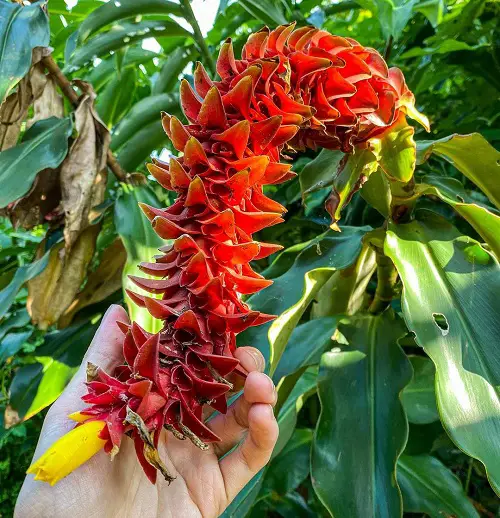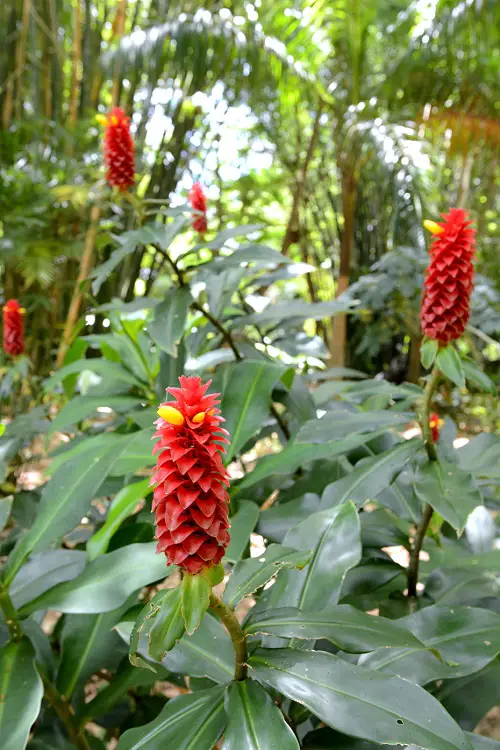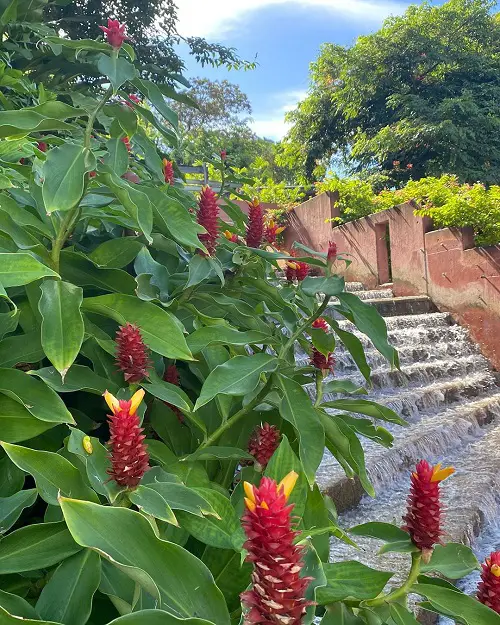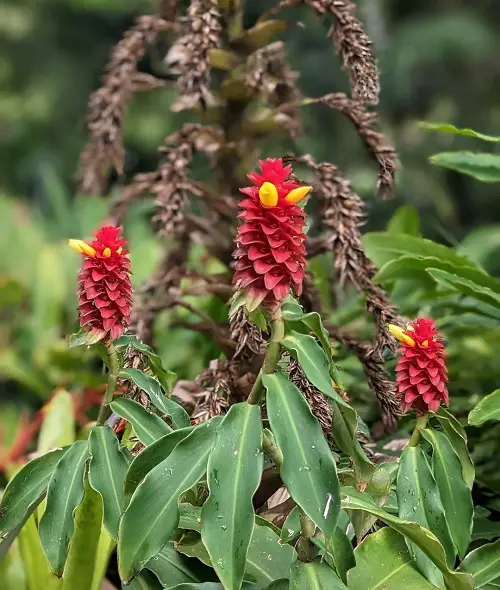Quirky and colorful—that’s what Costus Barbatus is and having one in the garden will surely turn a lot of heads!

Costus barbatus is also famous as the Red Tower Ginger and makes for quite a surprising element wherever it grows. If you want a plant that stands out, this is it!
Costus Barbatus Plant

Native to Central and South America, Costus barbatus loves to thrive in a shaded spot where it can bask in plenty of indirect light and humidity all day long.
When the plant blooms, it resembles like there are lines of torch lit that stand tall above lush green foliage. These blooms are also a magnet for pollinators like hummingbirds, to it is also a great plant to attract these birds to the garden.
Growing Costus Barbatus
The best way to grow costus barbatus is through division—spring or early summer is the best time to do it.
Get hold of a healthy plant. Take it out from the pot or ground, and look for the healthiest rhizome part. Using a sharp knife, divide it into sections, making sure each one has healthy roots attached to it.
Once done, plant those sections in a pot filled with well-draining potting mix. Water well, and make sure the plant gets plenty of indirect light (no direct sun). The divisions will root in a few weeks.
Requirements for Growing Costus Barbatus

Location and Sunlight
Costus barbatus thrives best in spots where it can get indirect light all day long. Avoid planting it in a shaded area, as it will result in little to no flowers. A spot that gets 2-3 hours of direct and mild morning sun would be perfect!
Soil
Though the plant is not that fussy about the growing medium, it will surely appreciate a soil that’s well draining. If you are using garden soil, add plenty of perlite or pumice to enhance drainage.
Water
Costus barbatus requires regular watering to thrive and flower better. Do not let the growing medium go completely dry, ever, as it will result in a demise of the plant.
Keep an eye on the topsoil, and water the plant whenever it feels a little dry to the touch. The key here is to keep the soil slightly on the moist soil to enhance humidity and keep the plant happy!
Temperature
The plant flowers best in the temperatures between 75 F and 90 F (24-32 C). Do not expose it to 50 F (10 C) or 95 F (35 C) for longer durations.
Humidity
Costus barbatus appreciates high humidity so it will be a good idea to grow the plant in groups, or plant it with other humidity-loving plants in close proximity to create a microclimate.
Costus Barbatus Care

Fertilizer
This plant will be more than happy to thrive without any feeding, but to promote flowering, you can fertilize it with a balanced liquid blend, like 10-10-10 or 14-14-14.
Dilute it to 1/2 of its strength and feed the plant right before it flowers or when you spot the buds. Avoid fertilizing during the dormant period in winter.
Pests and Diseases
Be careful of aphids, mealybugs, and spider mites. Make sure the plant gets plenty of air circulation and indirect light to keep it safe from these pesky pests.
To keep most of the diseases at bay, avoid overwatering the plant and also refrain from wetting the leaves.


